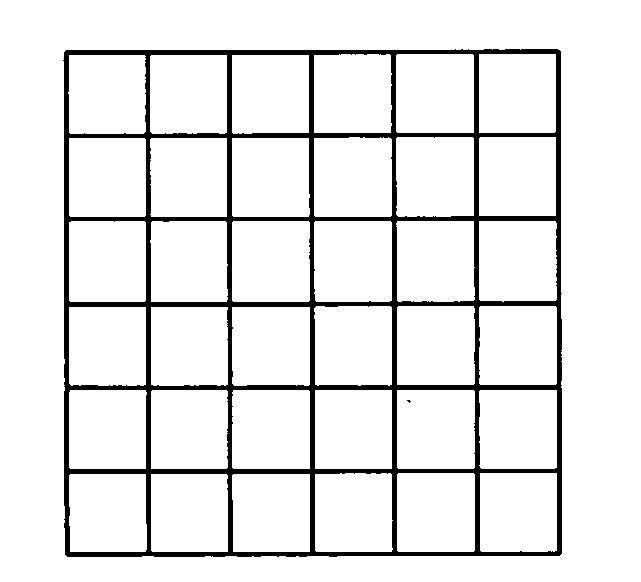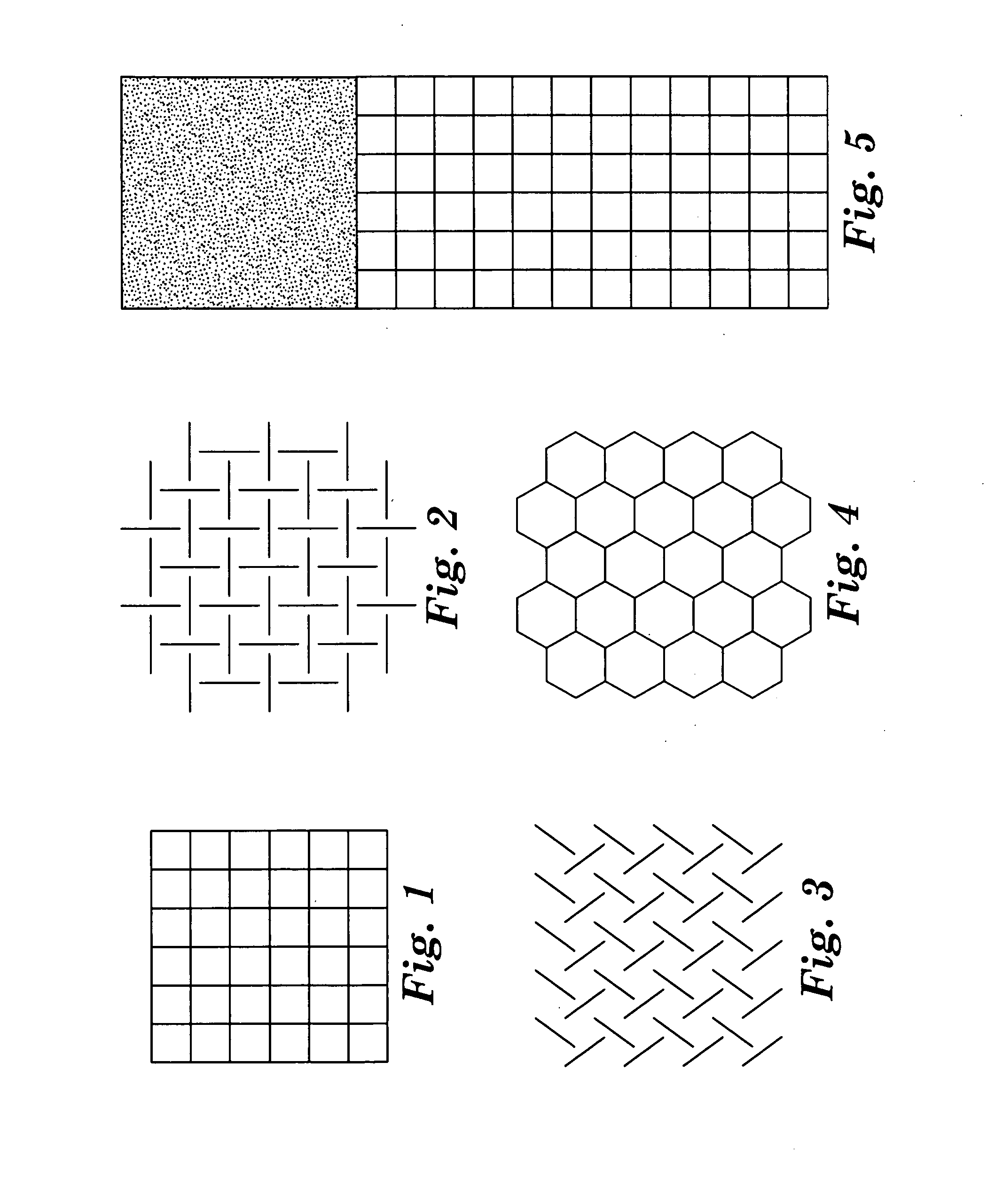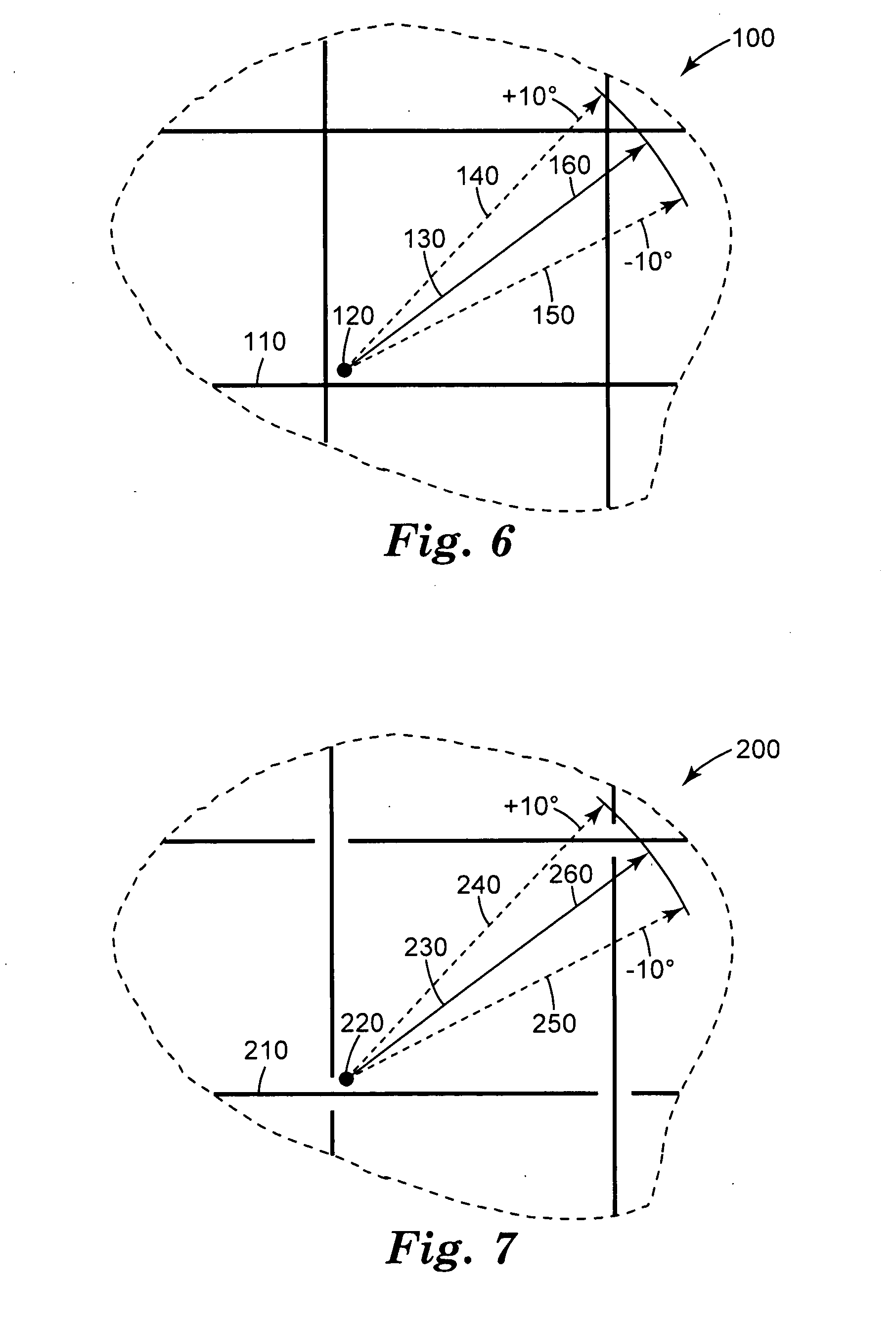Methods of patterning a conductor on a substrate
- Summary
- Abstract
- Description
- Claims
- Application Information
AI Technical Summary
Benefits of technology
Problems solved by technology
Method used
Image
Examples
example 1
[0091]An electrically conductive micropattern (V1) of thin film silver was fabricated and characterized according to the procedures described above. The ink solution comprised hexadecylthiol dissolved in ethanol at a concentration of 10 mM. The ink solution was contacted to the back side of the stamp for 2.3 hours, leading to a hexadecylthiol concentration in the PDMS adjacent to the printing or stamping surface of approximately 0.8 mM. The stamping time was 10 seconds and there was an applied mass of 260 g during stamping. FIG. 11 gives an SEM photomicrograph recorded from the completed thin film metal micropattern, derived from a low-density region comprising a hexagonal mesh with 97% open area and target trace width of 3 μm. The actual trace width measured over 5 μm.
example 2
[0092]An electrically conductive micropattern (V2) of thin film silver was fabricated and characterized according to the procedures described above. The ink solution comprised hexadecylthiol dissolved in ethanol at a concentration of 10 mM. The ink solution was contacted to the back side of the stamp for 17.5 hours, leading to a hexadecylthiol concentration in the PDMS adjacent to the printing or stamping surface of approximately 5 mM. The stamping time was 5 seconds and there was no mass applied to the substate-stamp assembly after rolling application of the substrate to the stamp. FIGS. 8, 9, and 10 give SEM photomicrographs recorded from the completed thin film metal micropattern. FIG. 12 is another SEM photomicrograph of the completed thin film silver micropattern, derived from a low-density region comprising a hexagonal mesh with 97% open area and target trace width of 3 μm. The actual trace width measured approximately 3.2 μm.
examples 3-42
[0093]Electrically conductive micropatterns of thin film silver were fabricated according to the process parameters listed in Table 1. Tables 2-7 give the quality factors assigned to selected examples, per the descriptions of quality factors given above. Examples that are not represented in Tables 2-7 are Examples 3, 4, 23 and 24, for which the stamping and etching steps yielded a very poorly defined pattern. For Example 38, a low density mesh region (square grid with 5 μm wide traces and 10% fill factor) of the conductor micropattern, measuring 1 mm in width and 33 mm in length and terminated at each end with a 2 mm by 2 mm pad, exhibited a resistance of 229 ohms. The resistance reading corresponds to a sheet resistance for the visible light transparent mesh region of 229 / 33=7 ohms per square. For Example 38, a low density mesh region (square grid with 3 μm wide traces and 5% fill factor) of the conductor micropattern, measuring 1 mm in width and 33 mm in length and terminated at e...
PUM
| Property | Measurement | Unit |
|---|---|---|
| Length | aaaaa | aaaaa |
| Length | aaaaa | aaaaa |
| Length | aaaaa | aaaaa |
Abstract
Description
Claims
Application Information
 Login to View More
Login to View More - R&D
- Intellectual Property
- Life Sciences
- Materials
- Tech Scout
- Unparalleled Data Quality
- Higher Quality Content
- 60% Fewer Hallucinations
Browse by: Latest US Patents, China's latest patents, Technical Efficacy Thesaurus, Application Domain, Technology Topic, Popular Technical Reports.
© 2025 PatSnap. All rights reserved.Legal|Privacy policy|Modern Slavery Act Transparency Statement|Sitemap|About US| Contact US: help@patsnap.com



